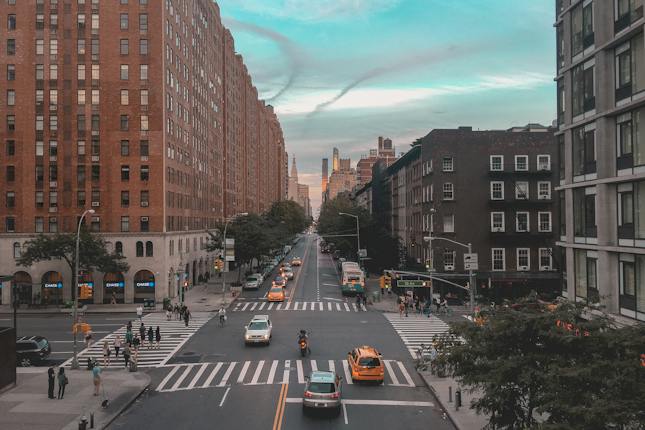We’ve all encountered crosswalks: the striped walkways that help pedestrians cross busy streets safely. But do you know about their fascinating history?
This article dives deep into the exciting facts about crosswalks, talking about their past, present, and future. You’re guaranteed to learn something new!
The Origins of Crosswalks
Some of the earliest crosswalks have been found in the ruins of Pompeii. They took the form of raised blocks. These paths were especially crucial in Pompeii since the roads were also the city’s sewers.
After experimenting with various types of signals, such as poles and markers, the town of Slough, England used white stripes for the first time. This became known as the “zebra crossing” and quickly gained popularity because of their simplicity and clear meaning.
The evolution of crosswalks was heavily influenced by who would have priority. Usually, pedestrians should be watched out for, but at times, it’s safer to prioritize cars instead. The type of crosswalk will change depending on this.
Types of Crosswalks
Past and modern crosswalks have different meanings. The most common types include:
Informal
These paths aren’t marked with stripes or poles but are still understood to be spots for pedestrians to cross.
Zebra
With its classic white stripes, everyone thinks of the zebra crossing when they picture a crosswalk. This type of path makes it clear that pedestrians have priority and vehicles must stop.
Signal-Controlled
This type of path is prevalent at intersections or busy streets with high speed limits. It features buttons on either side that pedestrians press. Signals will then stop traffic so people can safely get to the other side.
Underpass and Overpass
These two options are seen primarily in places where it would be difficult to divert traffic. An underpass runs underneath a road, usually taking the form of a tunnel. An overpass is a bridge, often with high walls and sometimes a closed ceiling.
Laws Governing Crosswalks

In most areas, the number one rule governing crosswalks is that pedestrians always have the right of way. Avian Law Group advises here that red lights, means of transportation, and situation don’t matter—the individual not in a motorized vehicle always has priority.
Another common law concerns jaywalking. Crossing the road in places that aren’t marked as a crosswalk is often illegal. This helps everyone stay safe.
Crosswalk Accessibility
Many cities, like New York City, have accessible pedestrian signals to help those with limited vision safely cross the road. They work like this:
- The system plays a low tone so the person can find its location.
- The person presses the button.
- The system says, “Wait,” and plays a slow beep.
- When it is safe to walk, the button vibrates and plays a quick series of beeps or speaks.
This method helps make crosswalks accessible and safe for everyone.
Creative Crosswalks
The black and white zebra crossing is the most recognizable type of crosswalk, but that doesn’t mean it’s the only one! All around the world, artists are encouraged to get involved in city planning to make art out of pedestrian paths.
This creativity isn’t just for fun. They’re often part of pedestrian safety campaigns, teaching people where to cross the road and how jaywalking can be dangerous. This art can also be used as part of celebrations!
The Future of Crosswalks
The constant advancement of technology means smarter crosswalks that make travel easier and safer for everyone! Here’s how:
Predictive Signal Changes
Imagine approaching a crosswalk and seeing the signal change in anticipation of your crossing rather than having to wait after pressing a button. This isn’t just a dream—it’s becoming real in cities worldwide.
Predictive signal changes make traffic flow smoothly and prevent groups of pedestrians from gathering, which can obstruct what those in vehicles can see.
Crossing Sensors
A significant issue facing pedestrians is traffic lights that turn green too quickly and make vehicles think it is safe to drive before they have finished crossing. This is especially a problem for those whose walk is slower, such as those with an injury.
Crossing sensors can sense whether people are on the road so that the traffic lights do not change before it is safe for them to do so.
Improved Visibility
New materials are making improved lighting and signaling possible. This makes it easier for pedestrians and motor vehicles to see better when paths are occupied.
Conclusion
Crosswalks are such an integral part of our daily lives that we take them for granted, but they have a fascinating history and play an essential role in cities worldwide! Next time you see a crosswalk, take a moment to think about how the white stripes came to be and how they’re keeping you and your community safe.









































